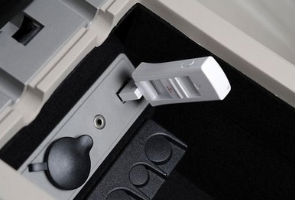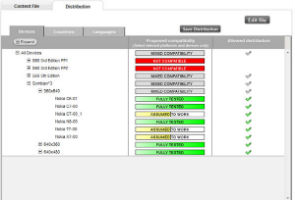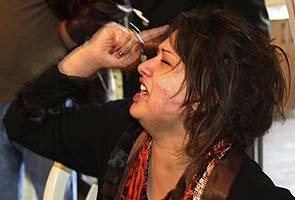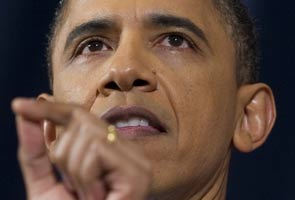Tokyo: Highly contaminated water is escaping a damaged reactor at the crippled nuclear power plant in Japan and could soon leak into the ocean, the country's nuclear regulator warned on Monday.
The discovery poses a further setback to efforts to contain the nuclear crisis as workers find themselves in increasingly hazardous conditions.
In another new finding, plutonium was detected in soil at five locations at the plant, Tokyo Electric Power Company, which runs the complex, said. The company asserted that the plutonium, found in samples taken a week ago, posed no threat to public health and that only two samples appeared to have plutonium that came from the plant. Tests of nuclear weapons in the atmosphere, which ended in 1980, left trace amounts of plutonium around the world.
The contaminated water threatening the ocean had radiation measuring 1,000 millisieverts per hour and is in an overflow tunnel outside the plant's Reactor No. 2, Japan's nuclear regulator said at a news conference. The maximum dose allowed for workers at the plant is 250 millisieverts in a year.
The tunnel leads from the reactor's turbine building, where contaminated water was discovered on Saturday, to an opening just 180 feet from the sea, said Hidehiko Nishiyama, deputy director-general for the Nuclear and Industrial Safety Agency.
The contaminated water level is now about three feet from the exit of the vertical, U-shaped tunnel and rising, Mr. Nishiyama said.
Contaminated water was also found at tunnels leading from the No. 1 and No. 3 reactors, though with much lower levels of radiation.
"We are unsure whether there is already an overflow" of the water out of the tunnel, Mr. Nishiyama said. He said workers were redoubling efforts to first remove the water from the Reactor No. 2 turbine building. Government officials have said that the water is probably leaking from broken pipes inside the reactor, from a breach in the reactor's containment vessel or from the inner pressure vessel that houses the nuclear fuel.
The nuclear safety agency also reported that radioactive iodine 131 was detected Sunday at a concentration 1,150 times the maximum allowable level in a seawater sample taken about a mile north of the drainage outlets of reactor units 1 through 4. It also said that the amount of cesium 137 found in water about 1,000 feet from plant was 20 times the normal level, roughly equal to readings taken a week ago.
Mr. Nishiyama said there were no health concerns because fishing would not be conducted in the evacuation-designated area within about 12 miles of the plant, the Kyodo news agency reported.
The disclosure about the escaping contaminated water came as workers pressed their efforts to remove highly radioactive water from inside buildings at the plant. The high levels of radioactivity have made it harder for them to get inside the reactor buildings and control rooms to get equipment working again, slowing the effort to cool the reactors and spent fuel pools.
Workers pumped less water into the reactors Monday in an attempt to minimize the overflow of radioactive water from them, slowing the cooling process, Tokyo Electric said.
Alarm over the radiation levels grew last Thursday when two workers were burned around their feet and ankles after they stepped into highly radioactive water inside the turbine building of Reactor No. 3. A third worker who was wearing higher boots did not suffer the same exposure. Japanese news media reported that the three workers were released from the hospital on Monday.
Over the weekend a worker trying to measure radiation levels of the water at Reactor No. 2 saw the reading on his dosimeter jump beyond 1,000 millisieverts per hour and left the scene immediately, said Takeo Iwamoto, a spokesman for Tokyo Electric Power.
Under normal conditions the average amount of radiation workers at the plant are allowed to be exposed to is at most 50 millisieverts a year. In emergency situations the limit is usually raised to 100 millisieverts but it has been raised to 250 millisieverts during the crisis.
There was no evacuation of the workers stationed at Daiichi after the high radiation levels were discovered. Of the workers at the site on Monday, 381 were from Tepco and 69 from a contractor. Firefighters and members of the Japanese military have also been helping at the plant. Naoki Sunoda, a spokesman for Tokyo Electric, said that since the crisis began on March 11, 19 workers had been exposed to radiation levels of 100 millisieverts.
Mr. Sunoda said workers on Monday were still trying to determine a way to approach the turbine building of Reactor No. 2 to extract the contaminated water.
The source of the plutonium found at the plant was unclear. All three kinds of nuclear fuel at the complex could leak plutonium. Reactor No. 3 is fueled partly by mixed oxide fuel, or mox, which is made from plutonium and uranium. Most reactors' fuel is uranium.
But plutonium is a regular byproduct of a reactor's splitting uranium atoms in two. In a kind of nuclear alchemy some of the speeding subatomic particles of the fission process turn uranium into plutonium.
So reactor fuel rods that undergo atomic fission get riddled with plutonium -- though less than in mox fuel. Thus any of the reactors at Fukushima Daiichi could leak plutonium -- as could spent fuel rods in cooling pools atop the reactor buildings.
The most abundant type of plutonium, the 239 form, has a half-life of 24,000 years and emits alpha rays. If deep inside the body alphas can cause healthy tissue to turn cancerous. But the rays are so weak that outside the body they can be stopped by skin or tissue paper.
The Fukushima Daiichi plant has been leaking radiation since a magnitude 9.0 quake and ensuing tsunami struck northeastern Japan's coast on March 11. The tsunami knocked out power to the plant's system that cools the nuclear fuel rods.
Yukio Edano, the government spokesman, said on Monday that it was too early for people to return to homes within a 12-mile radius of the plant.
"We cannot guarantee safety at the moment as the situation is still under evaluation," he said.
The chairman of the United States Nuclear Regulatory Commission, Gregory Jaczko, was in Tokyo on Monday meeting with senior Japanese government officials and representatives from Tokyo Electric, also known as Tepco. Mr. Jaczko reiterated that the commission is prepared to provide assistance but did not provide details.
"The unprecedented challenge before us remains serious and our best experts remain fully engaged to help Japan address the situation," he said in a statement.
Mr. Jaczko's visit came as Japan asked the French nuclear industry for help. A spokeswoman for the French nuclear power company Areva said the firm was providing support to Tepco.
"The whole French nuclear industry has received a request for help from Tepco," said Fleur Floquet-Daubigeon in Paris. "We're not sending people at this time; we are just sharing technical expertise."
"We're basically in a brainstorming phase right now," she added.
The French energy minister, Eric Besson, said the call for help had also come from the Japanese government, Reuters reported. "Japan explicitly asked EDF, Areva and France's nuclear research body (CEA) to help them," Mr. Besson said.
Areva and other French companies, including the giant state utility EDF, the world's largest operator of nuclear plants, have already provided boron, which can help choke off a nuclear reaction, gloves, measuring equipment and other gear.
Relief supplies are reaching more earthquake survivors, but low temperatures and aftershocks continue to make life miserable.
On Monday morning an aftershock with a magnitude of 6.5 off the coast of northeast Honshu triggered a tsunami alert, which was later canceled.
The public broadcaster, NHK, said the death toll from the quake and tsunami had grown to more than 10,800, while more than 16,200 remained missing. More than 190,000 people remained housed in temporary shelters, it said.



















